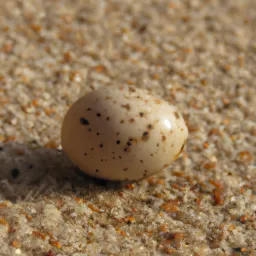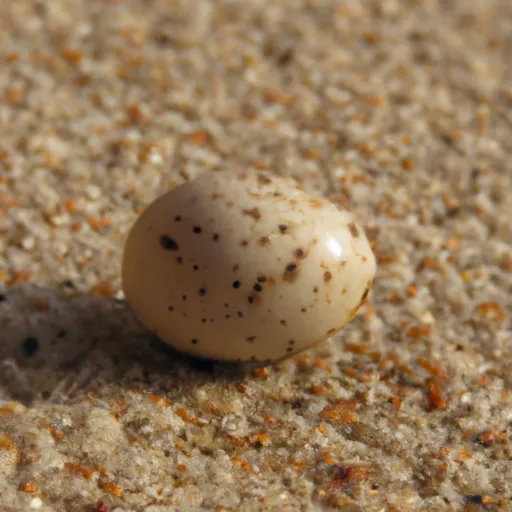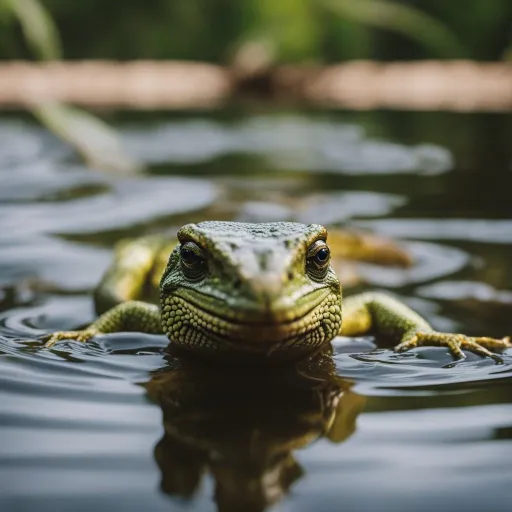Have you ever wondered about the process of lizard egg incubation? If so, you’re in luck! This article explores the fascinating world of lizard reproduction and answers the burning question on everyone’s mind: how long does it actually take for lizard eggs to hatch?
From the different factors that affect incubation time to the various species’ unique characteristics, you’ll gain a deeper understanding of this intriguing natural phenomenon.
So, get ready to embark on an egg-citing journey as we unravel the mystery of lizard eggs and their hatching timeline.

Factors Affecting Lizard Egg Incubation Period
When it comes to the fascinating process of lizard egg incubation, there are several factors that can influence the duration it takes for the eggs to hatch.
Temperature, species, and environmental conditions all play a crucial role in determining the incubation period.
In this article, we will delve into each of these factors, providing you with a comprehensive understanding of how they affect the development of lizard eggs.
Temperature
Temperature is one of the primary factors that greatly impacts the incubation period of lizard eggs. Lizards are ectothermic, meaning their body temperature is dependent on the temperature of their surroundings. Therefore, the temperature at which the eggs are incubated has a direct influence on their development.
Influence on Incubation Period
Different temperatures can result in varying incubation periods for lizard eggs. Generally, higher temperatures tend to accelerate embryonic development, leading to a shorter incubation period. Conversely, lower temperatures slow down the development process and prolong the incubation period. Therefore, maintaining optimal temperature conditions is crucial to ensure successful hatching.
Optimal Temperature Range
Each lizard species has its own optimal temperature range for egg incubation. Maintaining the correct temperature within this range is vital for the eggs to develop properly. If the temperature strays too far from this ideal range, it can lead to developmental abnormalities or even death of the embryos. Therefore, it is essential to understand the specific temperature requirements of the species you are incubating.
Temperature Gradient
Creating a temperature gradient within the incubation environment can allow the eggs to choose the most suitable spot for their development. This mimics the natural conditions where lizards lay their eggs in areas with temperature variations. By providing a temperature gradient, you give the eggs the opportunity to select the temperature that best suits their needs, resulting in healthier and more successful hatching.

Species
Another crucial factor that affects the lizard egg incubation period is the specific species of lizard. Different lizard species have distinct incubation requirements and exhibit variations in the time it takes for their eggs to hatch.
Variation in Incubation Time
Lizard species exhibit significant variation in their incubation periods. While some species may take a relatively short time for their eggs to hatch, others may have a significantly longer incubation period. Factors such as the size of the eggs, metabolic rate of the species, and environmental conditions contribute to this variation. It is essential for lizard breeders or researchers to understand the specific requirements of the species they are working with to ensure successful incubation.
Common Lizard Species
The incubation periods of various lizard species can differ significantly. For instance, the widely known green anoles (Anolis carolinensis) usually take around 35 to 45 days to hatch their eggs. On the other hand, the bearded dragons (Pogona vitticeps) have a longer incubation period of approximately 55 to 75 days. It is important to note that these are just examples, as there are countless lizard species worldwide, each with its own unique characteristics and incubation requirements.
Environmental Conditions
Besides temperature and species, environmental conditions also have a significant impact on lizard egg incubation. The humidity levels and the nest location are two vital aspects that affect the development and hatching of lizard eggs.
Humidity
Humidity levels within the incubation environment play a crucial role in lizard egg development. Higher humidity levels help prevent the eggs from drying out during incubation, maintaining the necessary moisture for successful embryonic development. Insufficient humidity can lead to problems such as egg desiccation or difficulty in hatching. It is crucial to monitor and adjust the humidity levels according to the specific requirements of the lizard species being incubated.
Nest Location
The location of the nest where lizard eggs are laid also influences their incubation period. Lizards instinctively choose suitable locations for egg deposition. Factors such as soil composition, exposure to sunlight, and predator avoidance play a role in nest selection. By replicating these natural nest conditions when incubating lizard eggs, we can provide them with an environment that promotes healthy development and increased chances of successful hatching.
Incubation Period
Now that we have explored the factors that influence lizard egg incubation, let’s delve into the incubation period itself. Understanding the general timeframe and specific examples will give you a better idea of what to expect during this captivating process.
Overview
The incubation period refers to the duration it takes for lizard eggs to develop and eventually hatch. This period encompasses various stages of egg development, from laying to hatching. It is crucial to monitor and provide the necessary conditions throughout this period to ensure the best chances of successful hatching.
General Timeframe
The duration of the incubation period varies depending on the specific species of lizard. Some lizard eggs may hatch within a matter of weeks, while others may require several months. On average, the incubation period ranges from 30 to 90 days, but it is essential to consult species-specific information for accurate estimations.
Example Species
As mentioned earlier, the green anoles and bearded dragons are two examples of lizard species with differing incubation periods. Green anole eggs typically hatch between 35 to 45 days, while bearded dragon eggs have a longer incubation period of 55 to 75 days. These examples illustrate the variability in incubation times, highlighting the importance of understanding the specific requirements of the species involved.
Egg Development Stages
To gain a deeper understanding of lizard egg incubation, it is essential to explore the various stages involved in the development of the eggs. The process encompasses egg laying, embryonic development, and finally, the fascinating hatching stage.
Egg Laying
The first stage of egg development is egg laying, where a female lizard, after a successful mating, deposits her eggs in a suitable location. The timing and frequency of egg laying vary among species, with some laying their eggs in a single clutch, while others produce multiple clutches throughout the breeding season.
Embryonic Development
After the eggs are laid, the incubation period begins, during which the embryos develop internally. The proper temperature and humidity conditions are crucial during this phase to ensure optimal embryonic and physiological development. The embryos absorb nutrients from the yolk and continue their growth in preparation for hatching.
Hatching
Finally, the most anticipated stage of the incubation period arrives – hatching! As the embryos develop, they reach a stage where they are ready to emerge from their shells. The hatchlings carefully break through the eggshell using specialized structures, such as the egg tooth, to create a gap. They then wriggle out of the shell, often with the assistance of their siblings, and make their way into the world.
Hatching
The hatching stage of lizard eggs is a remarkable process that showcases the amazing abilities of these tiny creatures. Understanding the details of this crucial stage can provide valuable insights into the behavior and development of hatchlings.
Process
During hatching, the hatchlings gradually emerge from the eggshell. This process can take varying lengths of time, depending on the species and conditions. The hatchlings use their egg tooth to crack the shell, creating a gap to push through. Once out of the shell, they often rest and recover before starting their journey into the surrounding environment.
Hatchling Behavior
After hatching, the hatchlings begin their independent lives. They may exhibit instinctive behaviors, such as seeking shelter, exploring their surroundings, or searching for food. Hatchlings are typically vulnerable and may display various survival mechanisms, such as hiding from predators or seeking suitable microhabitats for protection. By observing their behavior, researchers and reptile enthusiasts can gather valuable information on the early stages of a lizard’s life.
Conservation Efforts
Lizard eggs face various threats in the wild, including habitat destruction, collection for the pet trade, and climate change. To protect and conserve lizard populations, it is essential to implement effective strategies and initiatives.
Threats to Lizard Eggs
Lizard eggs are susceptible to multiple threats, which can significantly impact their successful hatching. Habitat destruction, caused by activities such as deforestation or urbanization, can disrupt nesting sites and expose eggs to unfavorable conditions. Additionally, the collection of lizard eggs for the pet trade can result in reduced wild populations. Climate change poses another significant threat, affecting temperature and humidity conditions necessary for successful egg incubation.
Conservation Strategies
To mitigate the threats posed to lizard eggs, conservation efforts must be implemented. These strategies can include habitat conservation, focusing on preserving nesting sites and restoring degraded habitats. Public awareness campaigns can educate communities about the importance of protecting lizard populations and their eggs. Additionally, implementing regulations and guidelines for responsible collection and trade of lizard species can help maintain sustainable populations.
Final Thoughts
In conclusion, understanding the factors affecting lizard egg incubation is crucial for successful hatching and the overall conservation of lizard species.
Temperature, species, and environmental conditions all play a vital role in determining the incubation period and the health of the developing embryos.
By addressing these factors and implementing effective conservation strategies, we can ensure the continued survival and well-being of these remarkable reptiles and their fascinating eggs.




